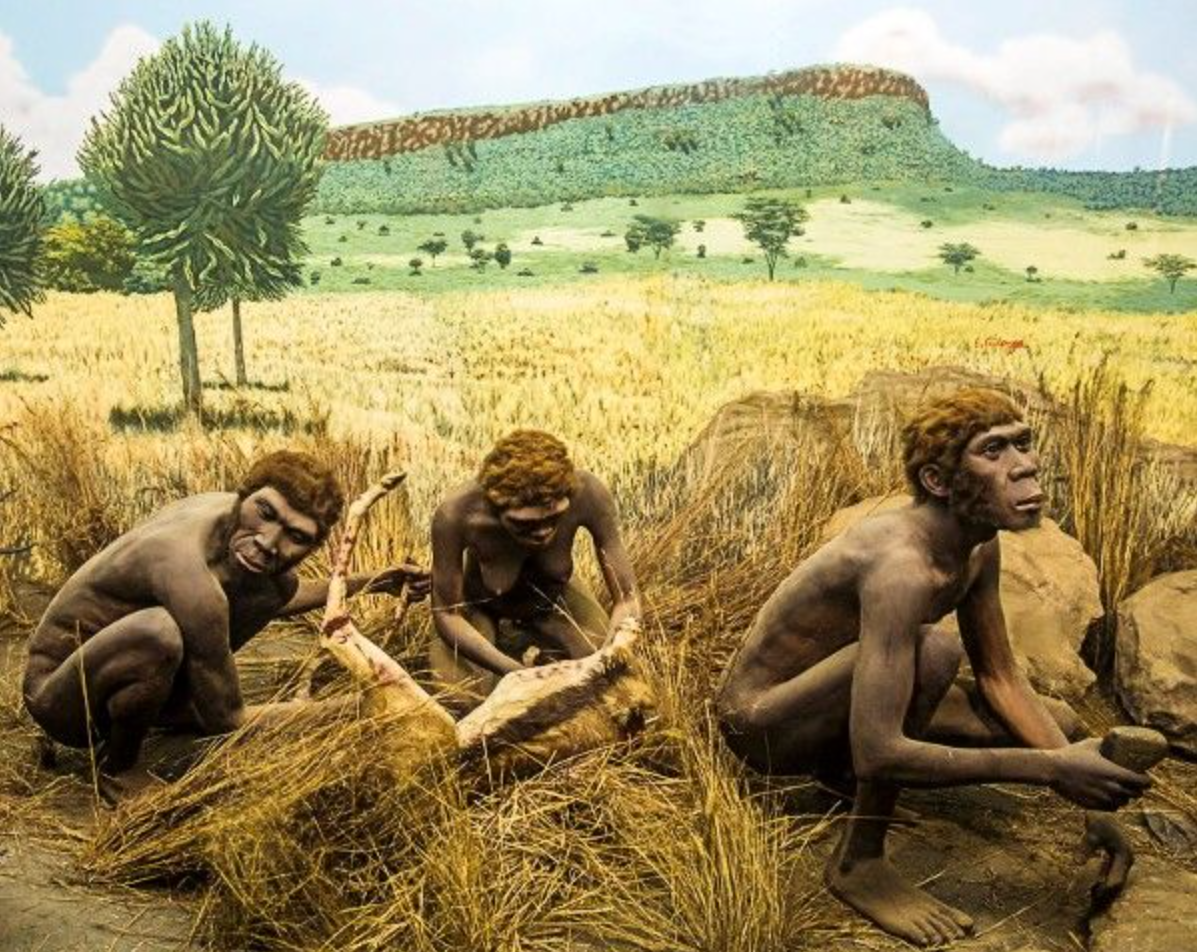Climate change nearly wiped out early humans 900,000 years ago
Scientists reveal humans nearly went extinct 900,000 years ago, with only 1,280 ancestors surviving for 117,000 years.

A new genetic study shows humanity almost vanished 900,000 years ago, shrinking to just 1,280 individuals before rebounding. (CREDIT: CC BY-SA 4.0)
Long before modern humans appeared in Africa about 300,000 years ago, our ancestors faced a crisis that almost ended the lineage entirely.
A groundbreaking study has revealed that between 930,000 and 813,000 years ago, the human population shrank so drastically that only about 1,280 breeding individuals remained alive for more than 100,000 years. This brush with extinction happened during a time of dramatic climate change, and it shaped not only our survival but also our genetic legacy.
A Mysterious Gap in the Fossil Record
For decades, researchers puzzled over a curious absence in the fossil record. Between 950,000 and 650,000 years ago, fossil remains of early human species in Africa and Eurasia become exceptionally scarce. Cranial fragments from Gombore in Ethiopia and fossils from Tighenif in Algeria offer only faint traces of our ancestors. This missing evidence left anthropologists guessing about what might have happened during that long stretch of time.
Now, the genetic bottleneck discovery helps explain that mystery. As Giorgio Manzi, an anthropologist at Sapienza University of Rome, puts it, “The gap in the African and Eurasian fossil records can be explained by this bottleneck in the Early Stone Age. Chronologically, it coincides with significant loss of fossil evidence.”
FitCoal: A New Way to Read Ancient Genomes
The key to unlocking this chapter of human history came from a computational tool called FitCoal, short for fast infinitesimal time coalescent process. Developed by an international team from China, Italy, and the United States, FitCoal analyzes the genetic patterns found in modern human DNA.
The team studied the genomes of 3,154 people from 10 African and 40 non-African populations. By working backward, FitCoal identifies when ancestral populations grew, shrank, or split apart. Unlike older methods, it avoids the numerical errors that often blur ancient demographic events, making it possible to detect even faint genetic signals.
Related Stories
- Fossilized teeth reveal a risky diet change spurred human evolution
- Denisovan jawbone discovery unlocks secrets of ancient human migration
“The fact that FitCoal can detect the ancient severe bottleneck with even a few sequences represents a breakthrough,” explains Yun-Xin Fu, a population geneticist at the University of Texas Health Science Center at Houston.
By studying allele frequency patterns—essentially the way genetic mutations are distributed across modern humans—the program revealed clear evidence of a long-lasting collapse in human numbers.
The Bottleneck That Nearly Ended Us
The findings paint a stark picture. Around 930,000 years ago, human ancestors were already vulnerable. When global climates shifted into longer and more intense ice ages, food became scarce, rainfall declined, and ecosystems collapsed. These shifts triggered a population crash that reduced genetic diversity by nearly 66 percent.
With so few people left, survival teetered on the edge. Researchers estimate the surviving community was smaller than many endangered species today. “Our results indicate that about 98.7 percent of human ancestors were lost at the beginning of the bottleneck, thus threatening our ancestors with extinction,” the authors note.
Yet this vulnerable group held on for about 117,000 years. That persistence may have been made possible by the early control of fire, with archaeological evidence from Israel suggesting its use as far back as 790,000 years ago. Once conditions improved, the population rebounded dramatically, growing nearly twentyfold around 813,000 years ago.
Shaping the Human Story
The bottleneck didn’t just reduce numbers; it changed the course of evolution. Scientists believe this period may coincide with the fusion of two ancestral chromosomes, forming chromosome 2, which is unique to humans today. This genetic event is thought to have played a role in the divergence of modern humans, Neanderthals, and Denisovans.
Yi-Hsuan Pan, an evolutionary genomics expert at East China Normal University, says the discovery “opens a new field in human evolution because it evokes many questions, such as the places where these individuals lived, how they overcame catastrophic climate changes, and whether natural selection during the bottleneck accelerated the evolution of the human brain.”
Indeed, shrinking to such a small population may have concentrated evolutionary pressures. Traits that improved survival—such as cooperation, adaptability, or cognitive skills—could have spread more quickly, influencing the trajectory of human development.
Explaining Differences Between Populations
The FitCoal analysis also uncovered why African and non-African populations show slightly different genetic patterns. While the severe bottleneck was clear in African genomes, it was harder to detect in non-African groups. That difference is due to the “out-of-Africa” dispersal, which complicated genetic signals. When the researchers adjusted their models, they found that all populations, African and non-African alike, experienced the same bottleneck.
Afterward, population sizes diverged again. African groups showed slightly larger effective population sizes than their non-African counterparts, likely reflecting the hidden effects of the ancient bottleneck combined with later migrations.
The timing of this crisis coincides with what scientists call the Early to Middle Pleistocene transition. Glaciations shifted from short cycles to longer, harsher ones, with colder oceans and widespread drought. These changes caused dramatic turnovers in wildlife across Africa and Eurasia, disrupting food chains and forcing early humans into survival mode.
The recovery that followed may have been sparked by both natural and cultural shifts. Along with improved climate conditions, the ability to harness fire provided warmth, protection, and new ways to prepare food. These innovations likely gave our ancestors a vital edge during the fragile recovery period.
Unanswered Questions
The study solves one mystery but leaves others open. Where exactly did these small bands of humans survive during the bottleneck? How did they organize themselves, and what strategies kept them alive for more than 100,000 years under extreme stress?
Li Haipeng, a computational biologist at the Shanghai Institute of Nutrition and Health, emphasizes that this is only the beginning: “Future goals with this knowledge aim to paint a more complete picture of human evolution during this period, unraveling the mystery that is early human ancestry and evolution.”
Archaeological digs, more advanced genomic tools, and refined climate models will all be needed to piece together this chapter of the story.
Understanding this ancient bottleneck deepens knowledge of human resilience and survival. By showing how climate stress nearly erased our lineage, the study highlights the role of adaptation in shaping modern humans. It also helps explain the loss of genetic diversity that influences health and disease today.
Insights from this research can guide studies on how species adapt—or fail to adapt—to rapid environmental change, a lesson increasingly relevant in the face of today’s climate challenges.
Research findings are available online in the journal Science.
Note: Materials provided above by The Brighter Side of News. Content may be edited for style and length.
Like these kind of feel good stories? Get The Brighter Side of News' newsletter.



